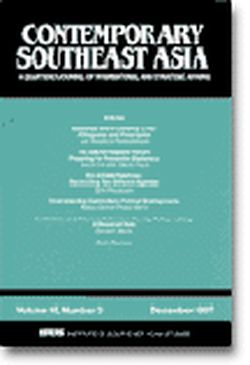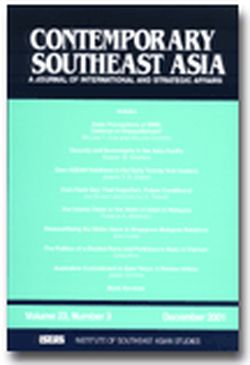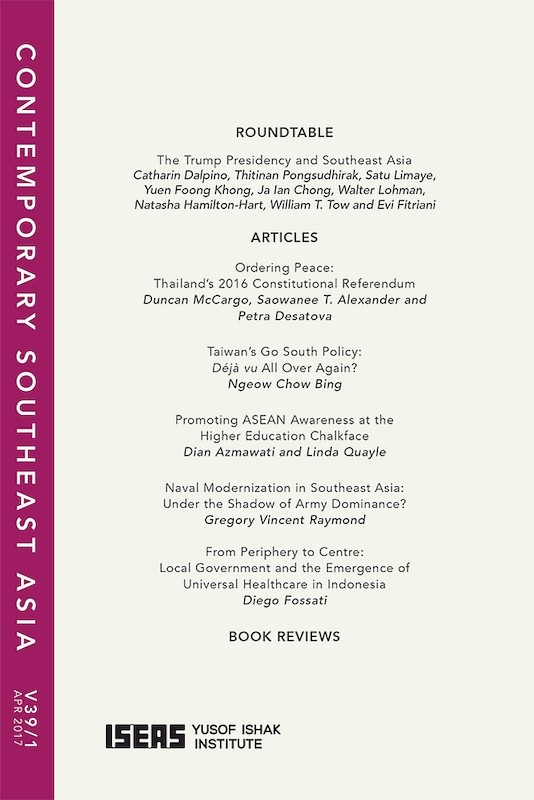-
-
There is a general consensus in East Asia that the United States is a benign hegemon but not necessarily a reliable one. In the absence of a specific adversary, U.S. security policy is frequently at the mercy of special interests and the pulling and hauling of domestic politics between the Executive branch and the Congress. In East Asia, U.S. strategy for the most part is divided between separate Northeast and Southeast Asian environments, although some overlap exists because of the importance of the South China Sea as a trade route. Americaâs most important bilateral relationship with Japan is experiencing a significant enhancement through the recently ratified New Defense Guidelines which provide a larger role for Japanese assistance to U.S. forces. On the other hand, in Southeast Asia, although the United States has access to ports and airfields in several states, these are not sufficient in the event of a major regional military crisis.
-
The Revolution in Military Affairs and the Evolution of China's Strategic Thinking, by You Ji, contributor
see abstract
The revolution in military affairs has inspired the Peopleâs Liberation Army to formulate its long-term modernization guidelines. To the PLA, RMA is the world standard and future trend for a powerful military. The very fact that China has little capability to cope with an RMA-type of war prods the PLA to study RMA and to apply, where it can, its principles. China will continue to reform the PLA along the lines of RMA, gradually streamlining and digitizing its C3I systems, significantly trimming its force size and substantially restructuring its force components. Military research and development will give greater stress to new concept weapons. National defence strategy, campaign tactics, and combat principles will also be under constant review. In short, the PLA will become more open, flexible, forward-looking and, above all, more professional.
-
Chinaâs rise is forcing a reassessment of Japanâs post-Cold War Asia policy. After 1985, a variety of factors pushed Tokyo to pursue closer ties with its regional neighbours. Deepening economic ties with the region, frustration with the dominance of American power, and fear of a weakening U.S. commitment to the region all pushed Japan in a new direction. In the early 1990s, Tokyo sought to expand its leadership profile in the region, and played a central role in the creation and development of Asiaâs regional institutions. By the middle of the decade, however, Chinese â as well as North Korean â actions had dampened Japanese enthusiasm for an Asia-centred foreign policy. Still, lingering frustration with U.S. dominance will prevent a complete return to the American fold. Japan will continue to pursue close ties with its Asian neighbours, but balancing Chinese influence will assume an ever-larger place in Tokyoâs strategy.
-
Where does the United Nations Convention on the Law of the Sea (UNCLOS) sit vis-Ã -vis the ongoing disputes over the Spratly Islands? The present row between the Philippines, China, and Malaysia over their respective claims to the Spratly archipelago highlights the tendency of policy officials and the political leadership to invoke the name of UNCLOS to either justify their claims and/or to cast aspersions on the behaviour of other claimants. This discourse, however, reveals the poor understanding that many have of UNCLOS, its provisions and the extent to which it can provide a workable framework for resolving this particular jurisdictional dispute. This article reviews the relevant terms and articles contained in UNCLOS and provides a realistic assessment of its potential contribution. In addition to highlighting the strengths of UNCLOS, the discussion will also point to its very real limitations.
-
The Political Economy of Taiwan's Relations with Vietnam
see abstract
Taiwan and Vietnam did not have any links from the mid-1970s to the late 1980s, but since the early 1990s both sides have improved their political and economic relations. Economists contend that Taiwanâs expanding investments in Vietnam play a key role behind this change. This article argues that the Taiwan authorities are using the islandâs economic resources in exchange for political gains from Vietnam. Taiwanâs economic diplomacy has been quite successful in developing the islandâs relations with Vietnam over the past decade, but Taiwan is also facing a serious challenge from Mainland China, because the latter is also strengthening its links with Vietnam. To solve Taiwanâs political isolation in the world, both Taiwan and the Mainland will have to go back to the negotiating table.
-
Malaysiaâs economic difficulties and political unrest have stimulated political parties and non-governmental organizations to re-assess efforts in shaping and responding to popular demands and attitudes. The governing Barisan Nasional coalition faces a stiff challenge from the Barisan Alternatif, composed principally of Parti Islam Se-Malaysia, the Democratic Action Party and Parti Keadilan Nasional, which have set aside their differences to unite in the call for Reformasi. Beyond the elections, however, the larger questions at stake concern the nature of multi-ethnic co-operation in Malaysia, including whether political norms have shifted to allow national-level interests to supercede ethnic-group allegiances, and whether Malaysians of various classes and races prioritize abstract ideals of good governance or more concrete economic and other aims.
-
Singaporeâs economic importance and military capability rank it among Southeast Asiaâs middle powers despite its small land area and population. Trends indicate that Singapore is determined to maintain an advanced military capability utilizing the latest military and information technologies which were proven in the Gulf War. However, this could lead to enhanced regional suspicions and have negative implications for the very security that the build-up was supposed to achieve. What this means is that Singaporeâs defence policy and foreign policy have to go hand-in-hand. Full use of its substantial military capability to support political and security objectives will only be achieved in the context of an integrated defence and foreign policy framework. Both Singapore and Malaysia also require political will to work together to achieve overriding common objectives, given the fact that the defence of both countries is indivisible.
- BOOK REVIEWS
-
BOOK REVIEW: The East Asian Challenge for Human Rights. Edited by Joanne R. Bauer and Daniel A. Bell, by Asad-ul Iqbal Latif, contributor
-
BOOK REVIEW: Malaysian Politics Under Mahathir. By R.S. Milne and Diane Mauzy, by Harold Crouch, contributor
-
BOOK REVIEW: Peace, Power and Resistance in Cambodia: Global Governance and the Failure of Conflict Resolution. By Pierre P. Lizée
-
BOOK REVIEW: A Special Relationship: The United States and Military Government in Thailand, 1947-1958. By Daniel Fineman, by Ernest LeVos, contributor
-






